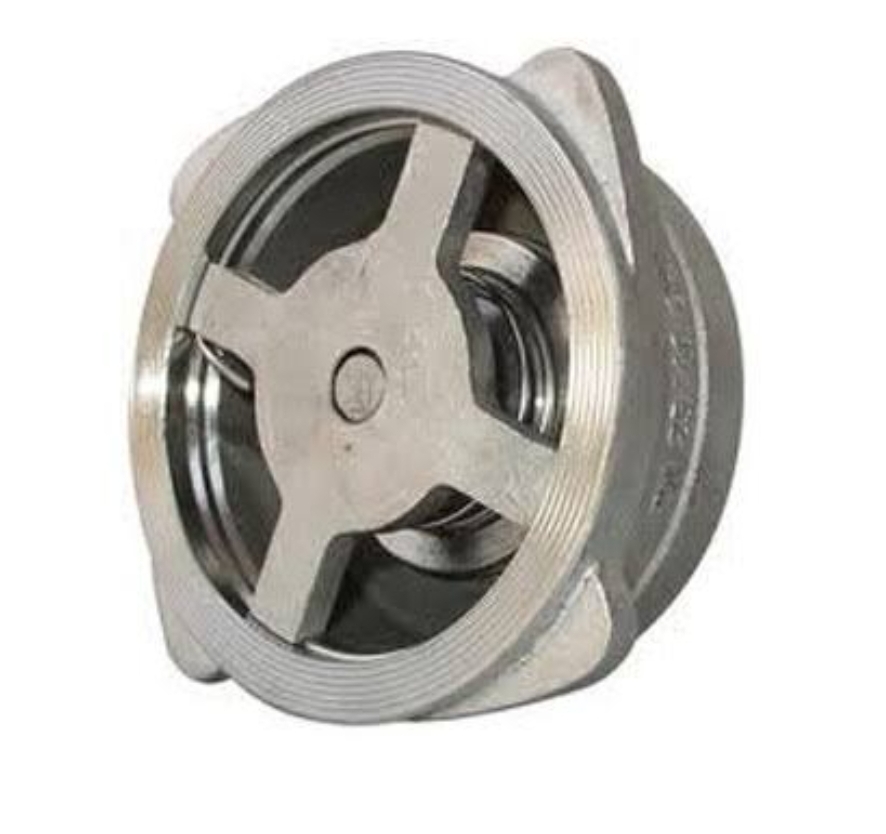
A disc check valve, also known as a disc-type check valve or simply a disc valve, is a type of one-way valve that allows fluid to flow in only one direction while preventing reverse flow. Here's a breakdown of its key features and how it works:
1. Valve Body: The main housing of the valve, which contains the internal components and connects to the piping system.
2. Disc: The key component that moves to control the flow of fluid. It typically pivots or swings to open or close the valve. The disc is usually made of materials like stainless steel, bronze, or plastic, depending on the application.
3. Spring(optional): Some disc check valves include a spring that helps the disc return to its closed position after fluid flow stops.
4. Seat: A sealing surface against which the disc closes to prevent reverse flow. The seat is often made of a soft material like rubber or elastomer to ensure a tight seal.
5. Hinge or Pivot: Mechanism that allows the disc to swing open or closed. The hinge or pivot is crucial for the disc’s movement and proper operation of the valve.
Flow Forward: When fluid flows in the desired direction, the pressure forces the disc away from the seat, allowing the fluid to pass through the valve.
Reverse Flow: If the flow direction reverses, the disc is pushed back against the seat by the pressure from the reverse flow, effectively closing the valve and preventing backflow.
Swing Check Valve: The disc swings on a hinge or pivot to open or close.
Tilting Disc Check Valve: The disc tilts away from the seat to open and tilts back to close, often used in high-pressure applications.
Wafer Check Valve: A compact design that fits between flanges in a pipeline, commonly used in space-constrained applications.
Disc check valves are used in various applications where preventing reverse flow is crucial, such as:
Water Supply Systems: To prevent backflow that could contaminate the water supply.
Pump Systems: To protect pumps from reverse flow that could cause damage.
HVAC Systems: To prevent backflow in heating, ventilation, and air conditioning systems.
Oil and Gas Industry: To prevent reverse flow in pipelines and protect equipment.
Compact Design: Often more compact and lightweight compared to other types of check valves.
Low Pressure Drop: Typically provides lower resistance to flow compared to some other check valves.
Quick Response: The disc moves quickly to close and prevent backflow.
Disc check valves are a crucial component in many fluid handling systems, offering reliability and efficiency in preventing backflow and ensuring smooth operation.